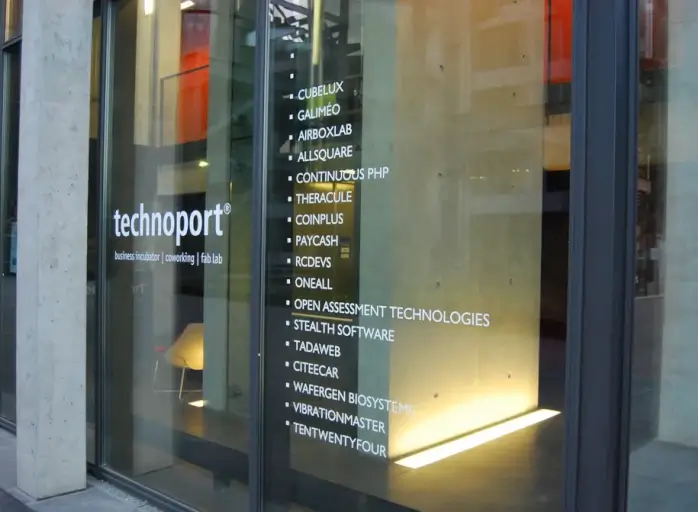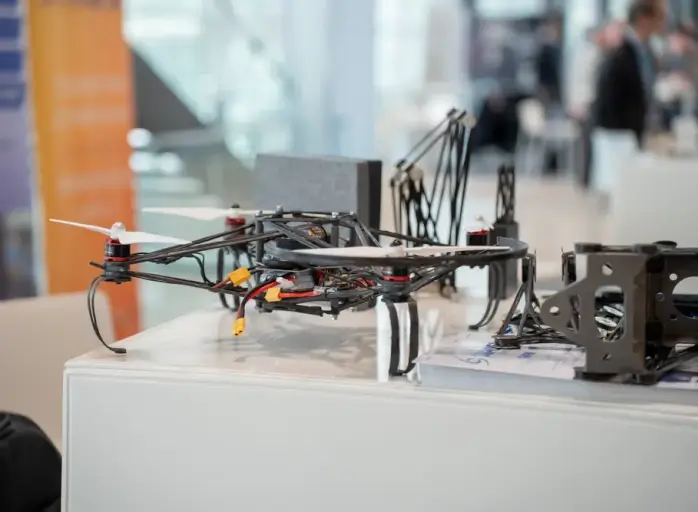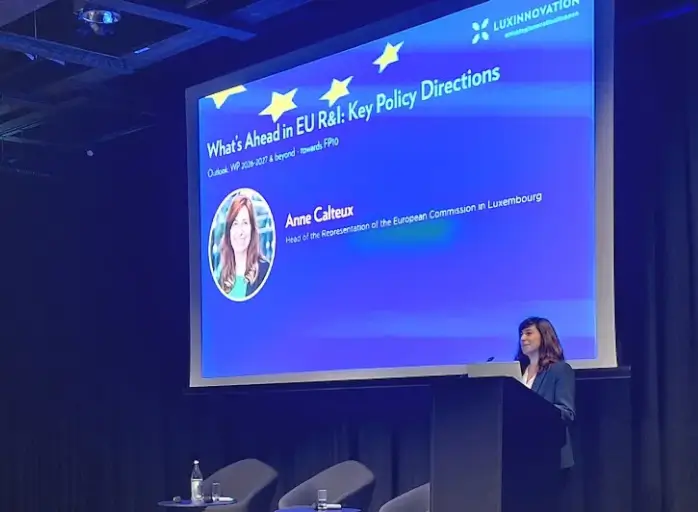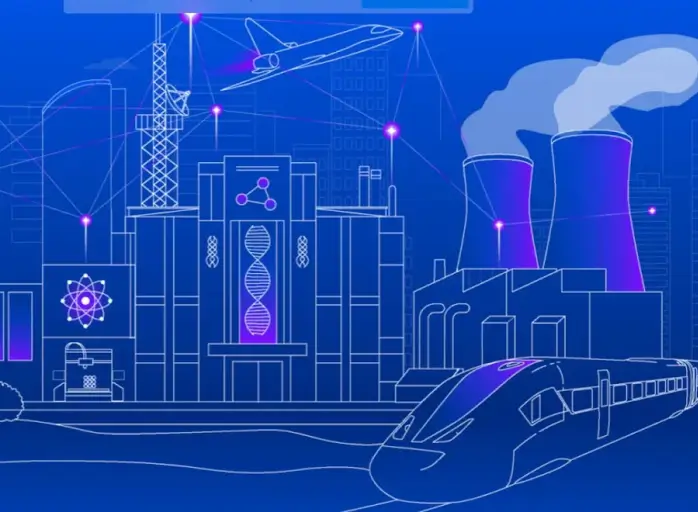
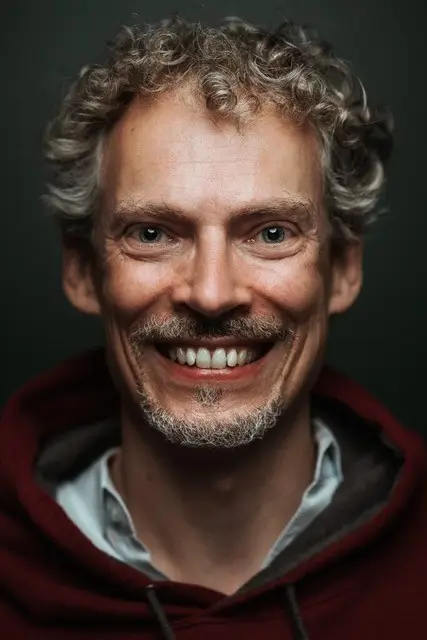
New ERC Project to Transform Future Materials
Scientists from Luxembourg, Portugal and England will receive nearly €8.5 million from the ERC to explore a unique class of materials: liquid crystal elastomers.
 Abigail Okorodus
Abigail Okorodus
The European Research Council (ERC) Synergy Grant fosters collaborations between outstanding researchers, enabling them to address fundamental research problems that no single scientist and their teams could tackle alone.
Three scientists — Professor Jan Lagerwall (University of Luxembourg), Professor Maria Helena Godinho (NOVA University of Lisbon) and Professor Eugene Terentjev (Cambridge University) — have secured approximately €8.5 million from the highly competitive scheme for the Alcemist (Atypical liquid crystal elastomers: from materials innovation to scalable processing and transformative applications) project. This project, which will run until 2031, aims to advance the understanding and application of liquid crystal elastomers (LCEs), a unique class of materials in-between liquid and solid states.
"LCEs have many similarities with regular rubber, but in contrast to them they reversibly contract and expand with temperature changes countless times," says Professor Lagerwall, Alcemist's project coordinator. Their unique elasticity and shapeshifting quality make them ideal for artificial muscles or actuators in medicine and soft robotics. To further unlock LCEs' far-reaching potential, the Alcemist project focuses on innovative chemistry, new processing techniques and novel applications, in line with the objective of the ERC to promote excellent science.
"We are pleased that Luxinnovation could support the application process for this project, which has become Luxembourg's first-ever ERC Synergy Grant,” says Francesca Borrelli, Senior Advisor European Funding at the national innovation agency.
The ERC is part of Horizon Europe, the EU’s key funding programme for research and innovation.
To complement the team’s strong profile in tackling the scientific challenges, Prof. Jan Lagerwall reached out to Luxinnovation, the national contact point of Horizon Europe, for additional guidance on both the proposal submission and the interview preparation. This highlights how making the most of available national support services can contribute to success.
New frontiers for smart materials
LCEs are currently niche, expensive and petroleum-based. The research endeavour aims to change that. "First of all, we want to switch from petroleum or oil-based chemicals, which is what is used today to make LCEs, to plant or animal-based raw materials,” explains Professor Lagerwall. The team is looking at abundant, natural materials like cellulose (from plants) and chitin (from shrimp shells and insects). "The important thing here is that all these materials are biologically derived. You can even find them in a lot of waste products, which means that we aim to reduce the cost of LCEs substantially, and make them sustainable," he adds.
But sustainability doesn't stop at the source. Conventional rubbers, and most current LCEs, are notoriously difficult to recycle due to permanent chemical bonds making it hard to change their relaxed shape, that is, the shape they take on when you do not stretch or compress them. Think of rubber bands or rubber balloons that cannot be recycled. Alcemist is tackling this head-on. "We want to switch to a different type of chemistry that actually allows you to open these bonds again, which means that you can reprocess it, you can recycle it, you can reshape it," Prof. Lagerwall notes. This breakthrough could be a game-changer for circular economy principles in materials science.
Processing techniques for larger output
The scientists are also looking into entirely new processing methods. "At the moment, liquid crystal elastomers is a kind of an academic curiosity," Professor Lagerwall admits. "They only exist in research labs. And we want to change that. Current samples are tiny, perhaps a centimetre large, and can take immense effort to produce,” he states, highlighting the current limitations. The idea is to introduce a new way of processing the precursor material of LCEs in a way that allows really large-scale production, both in size and in quantity, paving the way for widespread adoption.
Novel applications
The team is also exploring several new exciting applications given that LCEs are good at slowly responding to fairly small (natural) stimuli and changing shape. They also do not require a lot of energy to function in certain applications, compared to use in robotics for instance. Some applications the research group is looking into includes:
- Smart buildings: Current building components are often static and don't adapt to changing sunlight. LCE-integrated panels could revolutionise this by automatically adjusting to solar heat — folding to provide shade or enabling photovoltaic panels to self-orient towards the sun (heliotropically like a sunflower).
- Self-cleaning filters: Industrial filters frequently clog, leading to costly process interruptions and maintenance. LCE-based filters could offer a solution by dynamically changing their pore size to self-clean, thereby preventing downtime and reducing operational costs in fluid processing.
- Switchable adhesives: A lot of electronic or automotive components are assembled with permanent adhesives, complicating recycling and repair. LCEs could revolutionize this by creating adhesives whose stickiness can be turned off with UV light or temperature changes, allowing for easy disassembly.
A truly interdisciplinary project
In addition to the three scientists with different backgrounds, Alcemist boasts an international network of collaborators from the US, Scotland, Korea, China and Canada, focusing on everything from AI-driven materials simulations to applied mathematics and application development. By bringing together various disciplines, the project exemplifies the value of bringing together various skillsets.
"I love interdisciplinary work and have a long history of working with people doing completely different things. The idea here is that Lisbon, Cambridge and Luxembourg becomes kind of like an integrated extended lab, which will also benefit our post-doctoral researchers and Ph.D. involved," he shares.
For researchers considering the same ERC Synergy Grant, Professor Lagerwall, who is now also an ambassador for the ERC concludes with an invaluable advice: “If you have a great idea, by all means, go for it. Make sure to start early so you can integrate feedback received into the proposal and project. An open mind, plus original ideas and, of course, courageousness is important.”


